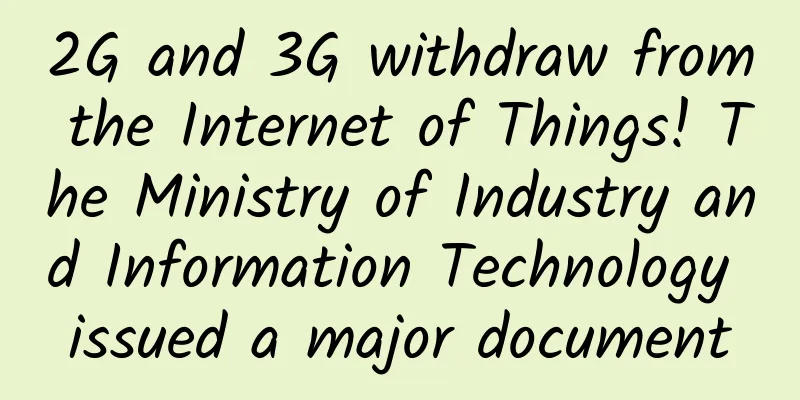How will operators charge in the 5G era? IT leaders say...

|
2019 is the first year of 5G commercialization. Statistics show that at least 211 operators in 87 countries and regions around the world are investing in 5G, 15 of which have already been commercialized. Recently, Huawei Consumer Business CEO Richard Yu and former China Mobile Research Institute President Huang Xiaoqing discussed the business model of operators in the 5G era at the 2019 China IT Summit. Yu Chengdong said that in the 5G era, operators need to find new business models and rethink their charging models. Different levels of latency should be charged differently. He suggested that "in the future, the charges for 2 milliseconds of latency and 100 milliseconds of latency should be different." Huang Xiaoqing believes that in the 5G era, operators need to change their business models from selling bandwidth to sharing revenue, which will bring great development opportunities to operators. In the 5G era, operators face the dilemma of weak growth Statistics from mobile industry consulting firm Hadden Telecoms recently showed that at least 211 operators in 87 countries (and regions) around the world are investing in 5G. Their investments are at various stages, from network deployment to technical testing, demonstrations and pilots. So far, 15 operators have launched commercial 5G services. They include Australia's Telstra and Optus, which offer fixed wireless 5G services via the 3.6GHz band. South Korea's Korea Telecom, LG U+ and SK Telecom all announced 5G commercial services in December last year. In the Asia-Pacific region, the list of operators investing in 5G includes China's three major operators: China Mobile, China Telecom and China Unicom. "Global operators are preparing for the large-scale launch of 5G, the first services have been launched, and the (terminal) device ecosystem is rapidly being established and ready for the upcoming large-scale application of various smartphone models," said Alan Hadden, director of Hadden Telecoms. "Dozens of operators are expected to launch their own 5G services in the next 12 months." On the morning of March 31, the 2019 China (Shenzhen) IT Summit was held. Huawei Consumer Business CEO Yu Chengdong, former China Mobile Research Institute President Huang Xiaoqing and others held a dialogue and discussion on "5G Era: Disruptive Innovation in Future Communications". Huang Xiaoqing, founder, chairman and CEO of CloudMinds Technology and former president of China Mobile Research Institute, pointed out that 5G will bring another order of magnitude improvement, which is unavoidable for any operator facing technological evolution in the 5G era. He believes that 5G is designed for the robot era. Just like the switch from 3G to 4G, the switch from 4G to 5G will also have an impact on operational services. In this regard, as a very important infrastructure, global mobile operators are facing a great dilemma. The dilemma is that the company's growth is weak and profits are shrinking, but they still have to invest in 5G and even 6G. Operators lack the motivation to invest in 5G. Huang Xiaoqing said that with the increase in traffic, the revenue of Internet companies is growing faster and faster. But for mobile operators, despite the increase in bandwidth, the number of users is no longer increasing, and the mobile phone penetration rate is close to 100%. In addition, after the popularization of *** traffic packages, the user ARPU value will no longer increase, and the revenue growth of operators has entered a bottleneck period. Huawei's consumer business CEO Yu Chengdong also pointed out that mobile operators' revenue used to come from phone calls and text messages. With the rise of WeChat and WhatsApp, the main source of revenue for mobile operators has become data traffic. When data traffic packages become monthly unlimited data traffic packages, user ARPU values will no longer increase. Although the speed is faster, the benefits to operators are very limited. The Internet companies that play the role of content providers benefit the most. Their American counterparts extend their revenue radius. In May 2018, AT&T, the second largest telecom operator in the United States, acquired Time Warner; in 2015, AT&T acquired DirecTV, a live satellite TV service provider, becoming the largest pay TV service provider in North America. In China, telecom operators can no longer acquire expensive Internet companies. Huang Xiaoqing believes that the solution to this problem lies in business model innovation. Operators should change the past bandwidth sales into revenue sharing. "The revenue sharing business model is the 5G business model. Otherwise, 5G will not work." In the 3G and 4G era, how big is the impact of OTT on operators? The 2018 financial reports of the three major operators were all released a few days ago. According to the comprehensive financial reports of various companies, China Mobile's personal market business revenue decreased by 1.9% year-on-year in 2018. The specific reason is that the growth of mobile Internet business revenue could not offset the decline in voice business revenue. In 2018, China Mobile's voice business revenue decreased by 27%, while mobile Internet business revenue only increased by 9.8%. In contrast, China Telecom and China Unicom's mobile Internet business revenue increased by 22.4% and 13.7% year-on-year respectively, while voice business revenue decreased by 17.6% and 13.9%. China Telecom's traffic revenue "outperformed" its voice business. China Unicom's two business revenue growth rates differed by 0.2%. The former benefited from the promotion of large traffic packages, while the latter gained a net increase of 44 million users in the 2I2C model. In recent years, the voice services of operators have been constantly impacted by OTT companies (which provide various application services to users through the Internet, and the services are provided by third parties other than operators). The traffic voice and video provided by OTT companies put the voice service in an awkward position, and the squeeze on the three major operators is particularly obvious. According to data from the Ministry of Industry and Information Technology, from January to October 2018, the duration of outgoing mobile phone calls nationwide reached 213.72 billion minutes, a year-on-year decrease of 4.7%. During the same period, the number of mobile phone users in my country increased by 136 million, a year-on-year increase of 10.7%, and the total number reached 1.55 billion. The scale of mobile phone users is growing positively, while voice calls are growing negatively, and the actual duration of voice calls has decreased by about 15.4% year-on-year. Another operator business that was hit hard was text messaging. In 2012, the total number of text messages sent nationwide reached 897.31 billion, with an average of about 560 text messages per person per year, which means that each person sends an average of 1.5 text messages per day. However, with the popularity of online social software such as WeChat, this number has dropped rapidly. In 1993, the world's first text message was successfully sent. After 1994, text messages officially began to be used for civilian and commercial purposes. Text messaging has really taken off since 2000, with 6.1 trillion text messages sent worldwide in 2010 alone. But in 2013, after the emergence of social platforms such as WeChat and Facebook, text messaging began to slowly decline. According to data from MIIT, Chinese mobile phone users sent a total of 900 billion text messages in 2012. This was the peak of the number of text messages in China. Since then, the number of text messages sent by Chinese mobile phone users has begun to decline, and the decline has become increasingly larger.
OTT is the abbreviation of "Over The Top", which refers to providing various application services to users through the Internet. This application is different from the communication services provided by operators. It only uses the operator's network, and the service is provided by a third party outside the operator. Many OTT service providers provide services and bill directly to users, making operators a mere "transmission pipeline" and unable to touch the huge value transmitted in the pipeline. Operators need to change their business models At the same time, traffic services began to replace voice and SMS services and came to the fore. At the same time, emerging services also became the breakthrough direction for operators. The 2018 financial reports of the three operators show that the operators have advantages in expanding cloud, big data and the Internet of Things based on their network capabilities. In 2018, the three major operators seized the precious window of releasing traffic dividends, grasped the trend of upgrading demand such as enterprise cloud migration and industrial Internet, and accelerated the development of emerging businesses. Although emerging businesses account for less than 10% of the total business revenue, innovative businesses are gradually becoming the main driving force for revenue growth. Take China Telecom as an example, China Telecom's emerging business revenue contributes more than 50% to incremental service revenue. In the annual reports of the three operators, emerging businesses such as cloud and IoT have all grown significantly. China Telecom's IDC and cloud business revenues increased by 22.4% and 85.9% year-on-year respectively, driving service revenue growth by nearly 2 percentage points. China Telecom has achieved rapid development of DICT and IoT businesses through cloud-network integration and IoT-cloud integration. China Mobile's IoT business revenue increased by 31% year-on-year. By the end of 2018, the total number of China Mobile's IoT smart connections reached 551 million, a year-on-year increase of 140.7%. In some provinces and cities, the number of connections between things has exceeded the number of connections between people, and NB-IoT has achieved continuous coverage in areas above townships. IoT service revenue was 7.53 billion yuan, a year-on-year increase of 40.2%. China Unicom's full-year industrial Internet business revenue increased by 45% year-on-year to 23 billion yuan, accounting for 8.7% of the total service revenue. ICT business revenue was 5.6 billion yuan, up 69% year-on-year; IDC and cloud computing business revenue reached 14.7 billion yuan, up 33% year-on-year; IoT business and big data business revenue reached 2.1 billion yuan and 600 million yuan, up 48% and 284% year-on-year respectively. In terms of home business, the three major operators have also broken through the pipeline model, and the value-added of broadband has been quite effective. China Telecom has rapidly expanded the market with "large traffic + 100M broadband + smart home", and the number of Tianyi HD users has exceeded 100 million, and smart home applications have begun to take shape. China Mobile's MagicBox users reached 96.81 million, a year-on-year increase of 69.1%; revenue reached 8.16 billion yuan, a year-on-year increase of 122.9%. In addition, the three major operators have also made breakthroughs in business areas such as finance and video. At the IT*** Summit, Huang Xiaoqing believed that in the 5G era, operators need to change their business model from bandwidth sales to revenue sharing, which will bring development opportunities to operators. For example, companies that make robots can share sales with operators. In the 5G era, you can't make money just by selling bandwidth. Yu Chengdong also agreed with Huang Xiaoqing's thinking on the operator profit-sharing model, saying: "Voice and SMS revenues have been almost wiped out by WeChat and other services. Operators are not growing and need to find a new business model." Yu Chengdong suggested that different levels of latency should be charged differently, such as charging differently for a 2 millisecond latency and a 100 millisecond latency. Yu Chengdong said that if unlimited traffic is provided and the charges are the same, it will cause a big traffic jam just like the free highway during the National Day. He believes that today's 5G era is much more mature than 20 years ago. This year is the first year for 5G to be put into commercial use, and large-scale investment will not be until next year. This time is much shorter than 20 years ago, and the speed of industry upgrading is very fast. |
<<: API Gateway Performance Comparison: Nginx vs. Zuul vs. Spring Cloud Gateway vs. Linkerd
Recommend
Operator T-Mobile announced: Delayed closure of Sprint 3G CDMA network for three months
On October 25, operator T-Mobile announced that i...
DogYun Korean Classic Cloud is now available at 30% off, starting from 17.5 yuan per month or 175 yuan per year
I received a message from DogYun that the Korean ...
The three major operators had a good start in 2021: China's 5G has crossed the inflection point of value growth
Three companies reported: 5G driving effect is ev...
18 pictures tell you: 10 key technical points that a 90-point network engineer should master
"As a network engineer, what does it take to...
This article illustrates the principles of Kubernetes network communication
[[275296]] Glossary 1. Network namespace: Linux i...
Wi-Fi 6E has been launched. What is the difference between it and ordinary Wi-Fi?
On September 2 last year, ROG released a high-end...
JustVPS: 30% off UK VPS/20% off all VPS, unlimited traffic in multiple data centers in the United States/France/Singapore/Russia/Hong Kong, China
JustVPS.pro bought a VPS in London, UK, last Dece...
Why the United States wants to delist China's three major operators
According to the Russian Satellite Network, regar...
zorocloud: US CN2 GIA line VPS monthly payment starts from 34 yuan, including DDoS protection
Zorocloud is a domestic hosting company that was ...
In the new infrastructure era, IIoT empowers China's manufacturing industry with surging power. TreeRoot Interconnect and Gartner jointly released an industry report
On March 24, 2020, Shugen Interconnect and Gartne...
Edge user performance improvement solution based on multi-point coordination CoMP
1. Project Background The 5G communication networ...
ZJI: 55% off on Hong Kong Kwai Wan dedicated servers, E3/E5 servers CN2+BGP lines starting from 550 yuan/month
As autumn is approaching, ZJI has launched a prom...
What the hell are the three-way handshake and the four-way wave?
[[382042]] This article is reprinted from the WeC...
Research on the market development strategy of operators under the background of digital transformation
At present, a new round of world scientific and t...
5G has been promoted for three years, why do some people still insist on using 4G? It turns out that I thought too simply
In recent years, there have been more and more vo...









